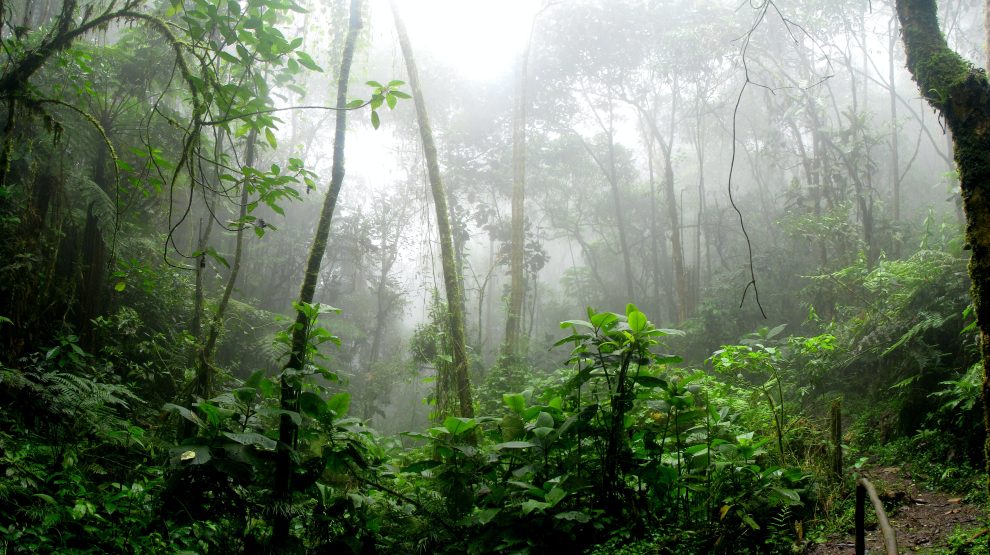The modern world threatens the existence of a small group of our own species.
Multinational mining interests, illegal logging, and slash-and-burn agriculture are among the many threats to the fragile ecosystems of South America’s rain forests. Efforts to protect them often cite the important role of rain forests as a preserve of plant and animal biodiversity or focus on their importance as the “lungs of the world.”
But those are not the only reasons to defend the endangered corners of the earth. There is one animal that makes its home in the diminishing rain forests whose protection should be of particular concern: homo sapiens.
Deep in the rain forest near the border of Peru and Brazil, one of the world’s last remaining uncontacted tribes was videoed by air last February. To call such people “uncontacted” is not altogether accurate. This small community was already painfully aware of some aspects of the modern world spinning around them. They had been driven across the border by illegal logging on the Peru side. But for the most part, the people captured by this long-range camera have been living the same way for centuries, in harmony with the rain forests and protected by it from the various ravages of disease and cultural contamination from the outside world.
So why disturb so vulnerable a community with flyovers? “This footage,” Jose Carlos Meirelles, a member of the Indian Affairs Department in Brazil (FUNAI) who filmed the community, said, “is the only way to convince the rest of the world that they are here. If illegal loggers or miners contact these people, they won’t shoot images . . . they’ll shoot guns.” Meirelles hopes to use his video evidence to make the strongest case possible for cracking down on the resource exploitation and encroaching of “civilized” people that threatens to obliterate this community.
At the behest of missionary or merchant, the world’s corners have slowly been penetrated in the last two centuries. Preserving this community will require strenuous swimming against the historical tides. One may well question the goal of such an effort.
Is it to preserve the community as objects for curious ethnographers? Why allow them to subsist at the mercy of the forest, facing hunger and disease alone, without the aid of modern science and knowledge? And are we not called to bring them to salvation today as much as were the missionary explorers of the past?
We are also called to respect human dignity, part of which is autonomy and freedom. Thrusting modernity on a people who do not welcome it is a profound violation of that autonomy and dignity. It is also terrifically hazardous to them. History is littered with examples of the horrendous viral results of first contact.
But the “uncontacted” themselves are not history; they are a living, vibrant part of the human family. In 60 nations around the world, 150 million tribal people live in tentative and perilous proximity to the modern world. Their claim to the land used by their people for generations has been begrudgingly etched into international law, but in practice it is hardly respected anywhere. The community filmed by Meirelles is threatened by a June 3 decision by Peruvian authorities to abolish the protected status of the forest around them.
In recent years, martyrs such as Sister Dorothy Stang, S.N.D. de N., have offered an example of a vibrant Catholic defense of the rainforest and indigenous rights. Bishop Erwin Kräutler of Xingu, the largest diocese in Brazil, continues his heroic stand in defense of the indigenous and their land.
All the same, it is fair to say that over five centuries the church has delivered as many antagonists as angels into collision with indigenous people. Perhaps in the present it can continue a penance for past transgressions and help to protect uncontacted people before they are, like the ecosystems that sustain them, lost forever.
This article appeared in the August 2011 issue of U.S. Catholic (Vol. 76, No. 8, page 39).
Image: David Riaño Cortés from Pexels











Add comment